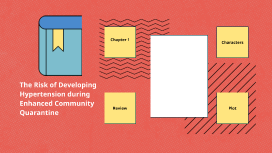Research Powerpoint
Transcript: Artificial Intelligence Brandon M. Thesis: The use of the AI portrayed in F451 can be compared to the AIs in our current technological advancement and whether it benefits us or oppose us at high costs. Intro In Fahrenheit 451, it contained advanced technology, such as the hound, that can be found associated with the firemen; as an AI its programmed to track, hunt and contain or kill the objective F451 Purpose to track down and kill any lawbreakers found around the city Keeps the law in order, protecting civilians and fellow comrades, military use, partner connections and obedience The Hound F451 the hound is obedient, supposedly, only to captain Beatty; following every command that Beatty gives out and has it secretly observe Montag, later on, track down Montag until he is found Has an array of abilities such as a morphine injector, tracking capabilities, data search and covert ops Pros Because of the variety of modalities the hound contains; it is also an danger towards civilians Has the ability to harm other people No emotional capabilities; can not sense emotions Will follow any order even if its an kill order Cons AI can be programmed to do something destructive as if it is “in the hands of the wrong person, these weapons could easily cause mass causalities” (futureoflife.org) AI would be hard to shut down in order to prevent enemy manipulation Develop destructive methods in order to accomplish its mission. “This can happen whenever we fail to fully align the AI’s goals with ours, which is strikingly difficult” (futureoflife.org) Lethality AIs can be used for evil purposes, manipulated and solve problems with destructive methods AI would not need to receive a check every month, however, “While they are quite costly to maintain and power, this cost is greatly less than what an entire company full of human employees would have to be paid” (healthresearchfunding.org) AI would not need to be given breaks as they do need to do the basic living maintenance a human would have to do such as eat and use the restroom AI “allows many avenues in research and exploration to develop and advance that would not have if it did not exist” (healthreasearchfunding.org); aiding in space exploration and planetary research to better understand the unknown The aid of artificial intelligence towards cost efficiency, job efficiency and exploration Cost & Job efficiency ‘Unsupervised learning’ as “a group of emerging technologies that allow for cybersecurity software to predict and safeguard against potential future attacks—without ever needing to experience a similar breach or an attack” (thenextweb.com) “approaches are based on not labeling data. Hence there is always the potential for missing out specific attack vectors because it is impossible to have a “catch-all” cyber defense in the current scenario. Organizations need to also still invest in supervised cybersecurity threat detection and response teams” “ Due to the massive increase in computational speed, cybercriminals will be able to successfully infiltrate and extract data before breach detection and response will be possible” Negatives of AI such as cybersecurity being taught in ‘unsupervised learning’ Risks of Cybersecurity AI could possibly create new jobs and better increase workplace efficiency AI are incapable of making moral decisions AI says, “AI will not be able to make a decision that is the morally correct one, because morality is unique to humans” (newsweek.com) AI robot speaks on the benefits and risks of AI; mentioning that ‘AI can cause a lot of harm’ AI Warning that the inevitable of the evils contained within “pandora’s box” can be slowed down by removing ‘greed’ from the process of creating artificial intelligence in order to better improve AI thinking NSA warns “It must not be misused to decide who gets a job, who gets an education, who gets a loan, who gets [medical] treatment. But if we don’t change the direction that we see today, if we allow Facebook and Google and Amazon to pursue these models and to apply these models to every aspect of human decision-making—as they are very, very aggressively striving to [do] today. We will find [that] we have become prisoners of a past that no longer exists” Edward Snowden speaks on artificial general intelligence, “The invention of artificial general intelligence is opening Pandora’s Box—and I believe that box will be opened. We can’t prevent it from being opened” (variety.com) NSA Warns of AI Medicine is ready for AI as they can see promise in diagnosing diseases and ailments, analyzing images such as x-rays and finding the best treatment plans AI aided data analysis could help medical professionals calculate accurate diagnoses more faster and skillfully; moving patients towards the right treatment quickly Aid in written language as studies show that “machine learning algorithms trained to assess word choice and order are better than clinicians at distinguishing between real and fake suicide notes, meaning

















